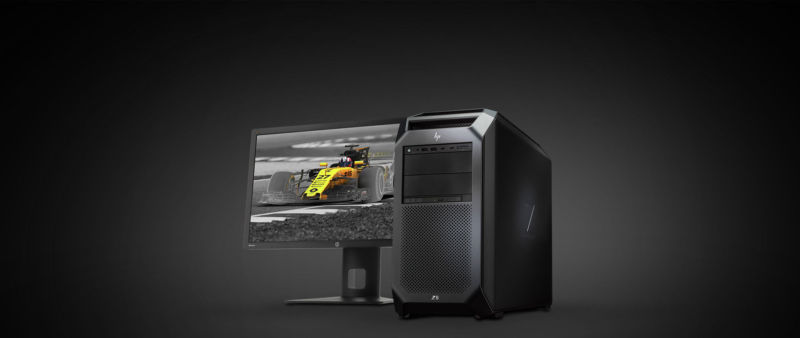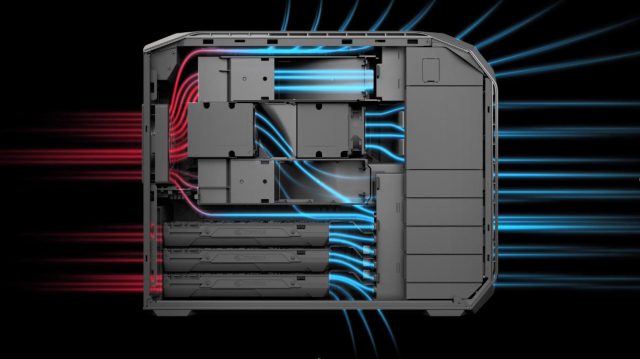
If you're a demanding computer user, sometimes your 13-inch Ultrabook laptop just won't quite cut it. For those looking for a little more computing power, HP's new Z8 workstation could be just the answer. The latest iteration of HP's desktop workstations packs in a pair of Intel Skylake-SP processors, topping out with twinned Xeon Platinum 8180 chips: 28 cores/56 threads and 38.5MB cache each running at 2.5-3.8GHz, along with support for up to 1.5TB RAM.
Next year, you'll be able to go higher still with the 8180M processors; same core count and speeds, but doubling the total memory capacity to 3TB, as long as you want to fill the machine's 24 RAM slots.
Those processors and memory can be combined with up to three Nvidia Quadro P6000 GPUs or AMD Radeon Pro WX 9100 parts if you prefer that team. The hefty desktop systems have four internal drive bays, two external (and a third external for an optical drive), and nine PCIe slots. Storage options include up to 4TB of PCIe-mounted SSD, and 48TB of spinning disks. A range of gigabit and 10 gigabit Ethernet adaptors are available; the machines also support 802.11a/b/g/n/ac Wi-Fi and Bluetooth 4.2. Thunderbolt 3 is available with an add-in card.
This kind of hardware tends to be thirsty, and, to that end, HP will fit the systems with up to a 1.7kW PSU.
Prices will start at $2,439 for the bottom spec; we'd expect the top-end configuration to cost 20 times that.
If you don't need quite as much hardware, the Z6 workstation line offers a single socket, for a maximum of 28 cores, 384GB RAM, and 4TB storage, and the Z4 uses a Xeon W (which is more or less a Xeon-branded version of the high-end desktop chips) and up to 256GB memory.

Now we don't expect everyone to rush out and buy one of these machines; HP is aiming them at markets such as 3D engineering and modeling and 8K video production, so they're probably slight overkill for gaming and e-mail. But we can all marvel at the engineering that goes into them, especially the ducting to handle the airflow and keep everything cool, even with a pair of 205W processors and a ton of PCIe cards, and of course the tool-free cases.
-
Z8 interior.HP
-
Z8 exterior.HP
-
Z6 interior.HP
-
Z6 exterior.HP
-
Z4 interior.HP
-
Z4 exterior.HP
reader comments
210